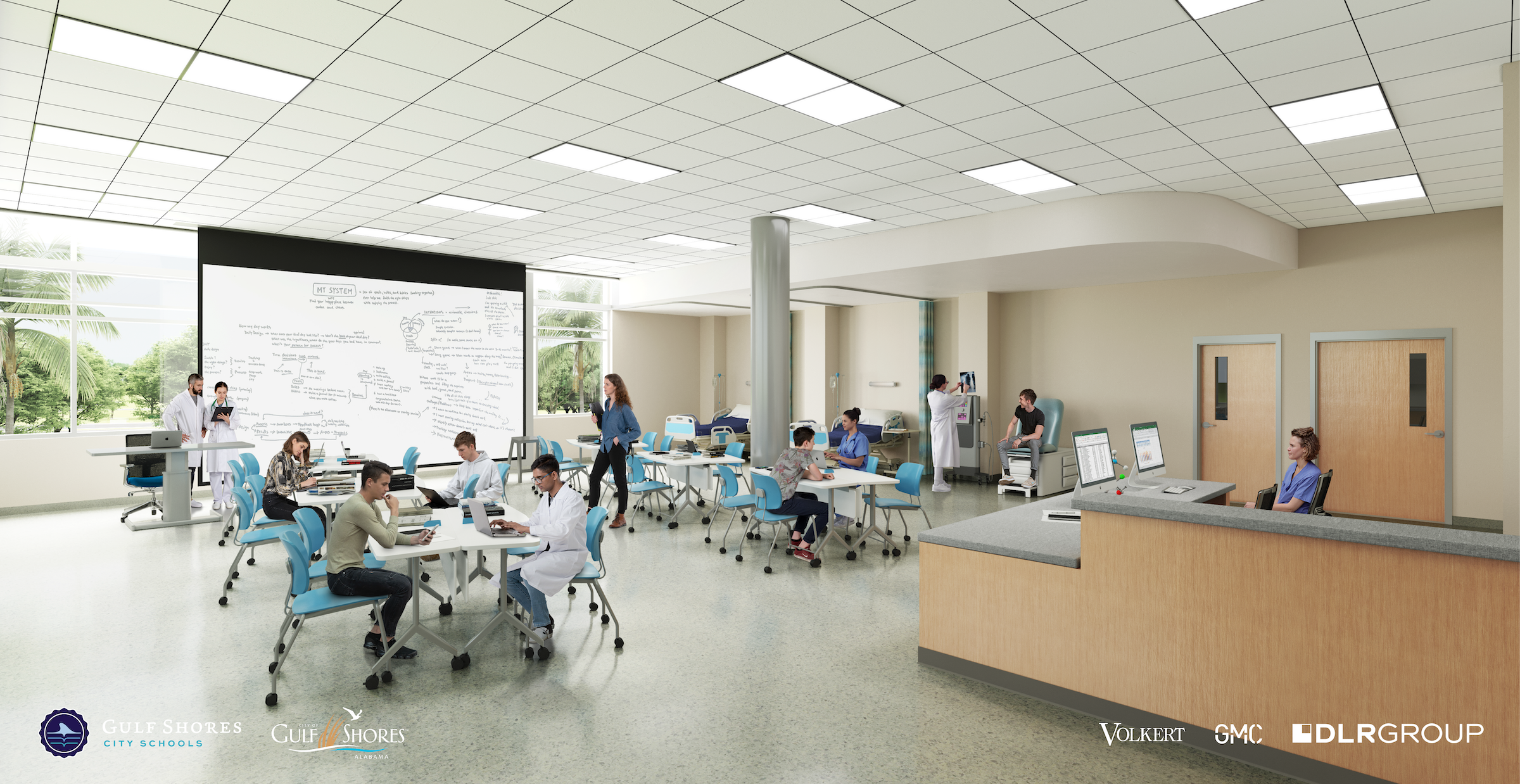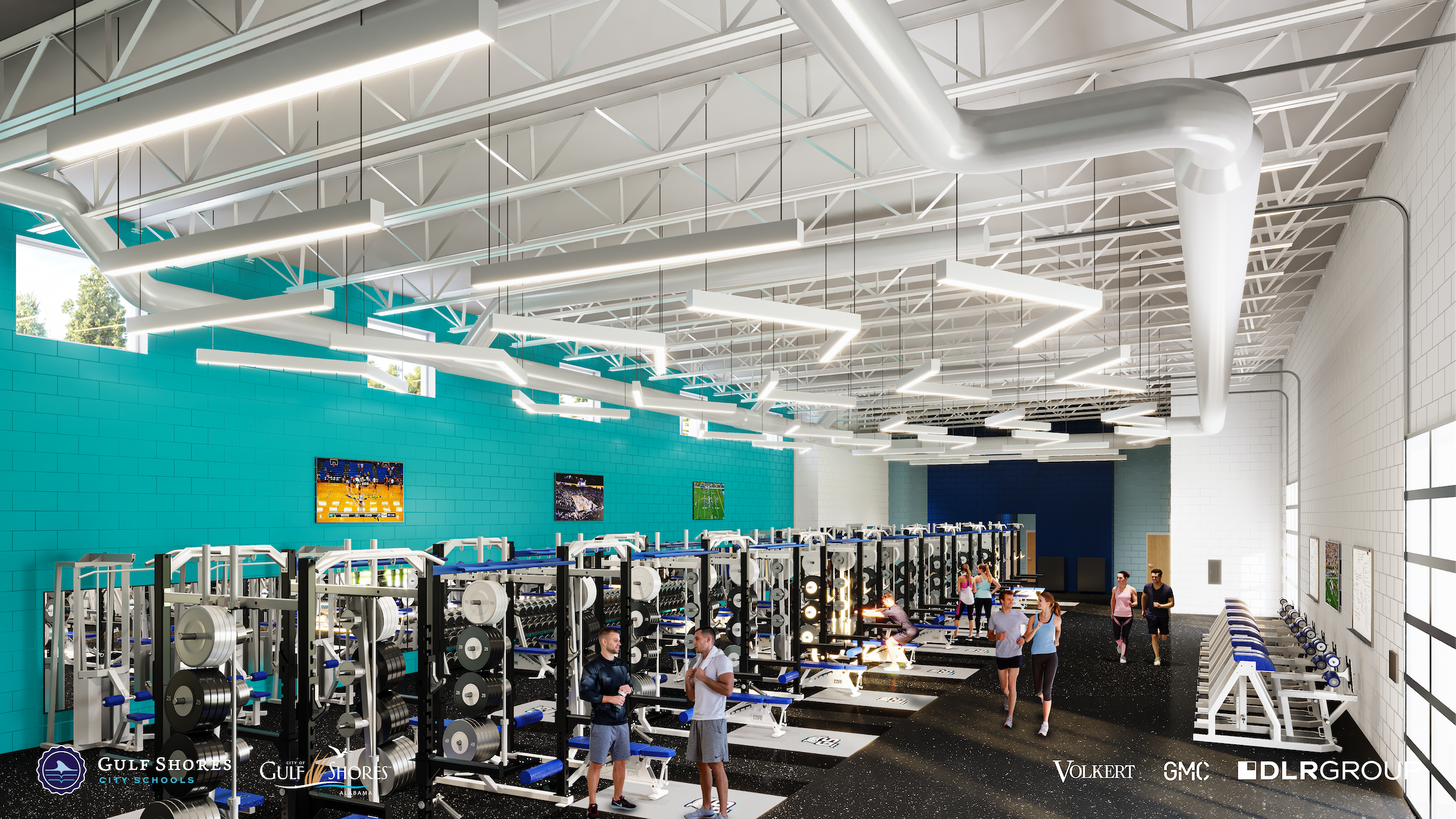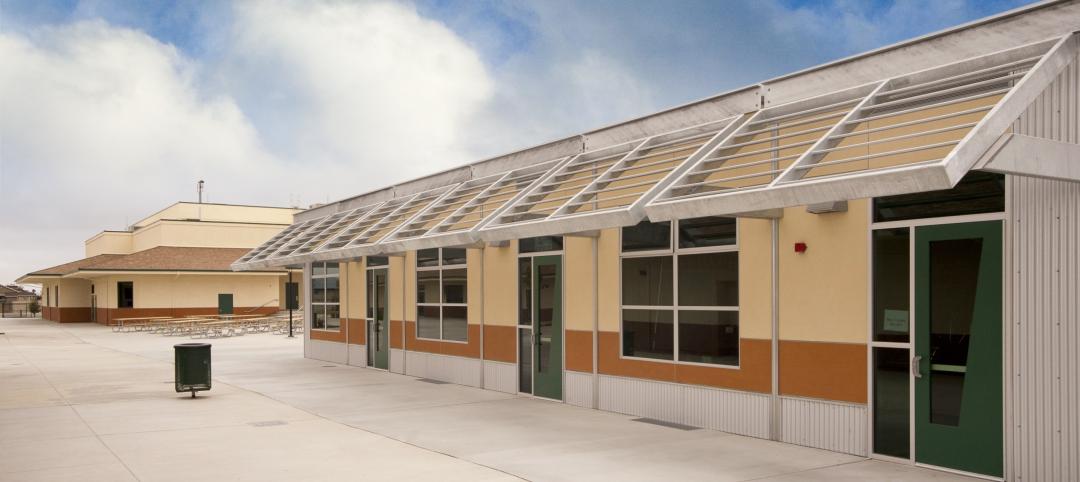In Gulf Shores, a city on Alabama’s Gulf Coast, a new $137 million high school broke ground in late April and is expected to open in the fall of 2026.
Designed by DLR Group and Goodwyn Mills Cawood, the 287,000-sf Gulf Shores High School will offer cutting-edge facilities and hands-on learning opportunities. The school will include state-of-the-art academic labs specializing in biomedical, marine biology, culinary arts, and finance, as well as spaces for music production, broadcasting, and the arts.
The school’s collaborative spaces include widened hallways, a media center with a maker space and video production studio, and a courtyard with “learning stairs” for interaction. The design also serves Gulf Shores City Schools’ emphasis on inclusivity and diversity of learning styles, with adaptable learning spaces and flexible classroom designs.
A notable feature of the new school is a “flex suite,” a versatile area that can accommodate groups of varying sizes, with seamless transitions between various activities. Similarly, the main hallway’s “sandbar” offers students a space to connect academically and socially.
The school’s Dolphin athletics center will be equipped with competition-size gymnasiums, locker rooms, athletic training rooms, a weight room, and a full-length covered practice facility.
Drawing on the coastal surroundings, the design features vibrant blue tones and other details that evoke the Gulf’s shoreline. Tall windows and expansive glass panels provide natural light and create an energizing learning atmosphere.
“The collective dedication of our educators, passionate community members, and forward-thinking leaders has shaped the vision for our new Gulf Shores High School,” Kevin Corcoran, Gulf Shores City Schools board of education president, said in a statement. “This school will be a hub of innovation, a center for excellence, and shape the future for generations to come.”
On the Building Team:
Owners: Gulf Shores City Schools and The City of Gulf Shores
Architect of record: Goodwyn Mills Cawood
Design architects: DLR Group and Goodwyn Mills Cawood
MEP engineer: DLR Group
Structural engineer: Tucker-Jones Engineers Associates
Interior designer, civil engineer, landscape architect: Goodwyn Mills Cawood
Interior designer, theatrical designer, lighting and acoustical engineer: DLR Group
Program manager: Volkert, Inc.
General contractor: Rabren General Contractors









Related Stories
| May 18, 2011
One of Delaware’s largest high schools seeks LEED for Schools designation
The $82 million, 280,000-sf Dover (Del.) High School will have capacity for 1,800 students and feature a 900-seat theater, a 2,500-seat gymnasium, and a 5,000-seat football stadium.
| May 17, 2011
Sustainability tops the syllabus at net-zero energy school in Texas
Texas-based firm Corgan designed the 152,200-sf Lady Bird Johnson Middle School in Irving, Texas, with the goal of creating the largest net-zero educational facility in the nation, and the first in the state. The facility is expected to use 50% less energy than a standard school.
| May 16, 2011
USGBC and AIA unveil report for greening K-12 schools
The U.S. Green Building Council and the American Institute of Architects unveiled "Local Leaders in Sustainability: A Special Report from Sundance," which outlines a five-point national action plan that mayors and local leaders can use as a framework to develop and implement green schools initiatives.
| May 10, 2011
Greenest buildings: K-12 and commercial markets
Can you name the nation’s greenest K-12 school? How about the greenest commercial building? If you drew a blank, don’t worry because our friends at EarthTechling have all the information on those two projects. Check out the Hawai’i Preparatory Academy’s Energy Lab on the Big Island and Cascadia Green Building Council’s new Seattle headquarters.
| Mar 15, 2011
Passive Strategies for Building Healthy Schools, An AIA/CES Discovery Course
With the downturn in the economy and the crash in residential property values, school districts across the country that depend primarily on property tax revenue are struggling to make ends meet, while fulfilling the demand for classrooms and other facilities.
| Feb 23, 2011
“School of Tomorrow” student design competition winners selected
The American Institute of Architecture Students (AIAS) and Kawneer Company, Inc. announced the winners of the “Schools of Tomorrow” student design competition. The Kawneer-sponsored competition, now in its fifth year, challenged students to learn about building materials, specifically architectural aluminum building products and systems in the design of a modern and creative school for students ranging from kindergarten to sixth grade. Ball State University’s Susan Butts was awarded first place and $2,500 for “Propel Elementary School.”
| Feb 15, 2011
LAUSD commissions innovative prefab prototypes for future building
The LA Unified School District, under the leadership of a new facilities director, reversed course regarding prototypes for its new schools and engaged architects to create compelling kit-of-parts schemes that are largely prefabricated.
| Feb 9, 2011
Gen7 eco-friendly modular classrooms are first to be CHPS verified
The first-ever Gen7 green classrooms, installed at Bolsa Knolls Middle School in Salinas, California, have become the nation's first modular classrooms to receive Collaborative for High Performance Schools (CHPS) Verified recognition for New School Construction. They are only the second school in California to successfully complete the CHPS Verified review process.
| Dec 17, 2010
Alaskan village school gets a new home
Ayagina’ar Elitnaurvik, a new K-12 school serving the Lower Kuskikwim School District, is now open in Kongiganak, a remote Alaskan village of less than 400 residents. The 34,000-sf, 12-classroom facility replaces one that was threatened by river erosion.
| Dec 6, 2010
Honeywell survey
Rising energy costs and a tough economic climate have forced the nation’s school districts to defer facility maintenance and delay construction projects, but they have also encouraged districts to pursue green initiatives, according to Honeywell’s second annual “School Energy and Environment Survey.”















